‘Karigar’ addresses the evolving ecosystem of Indian craft by eliciting viewpoints from those invested in its development. Much of the fashion industry occupies a contentious place within this ecosystem: its commercial motivations and cyclical nature make it seem the very antithesis of craft in its traditional form – it is fast and fleeting, built largely around a strategy of planned obsolescence. That said, fashion could equally be craft’s strongest advocate, ushering it into the contemporary market with a face that feels fresh.
In India, the ability to synthesize craft and fashion is already recognized as our USP, yet the reality is far more nuanced than it may seem. Design intervention, even well-intended, often leads to cross-pollination of crafts across regions, raising significant questions about hybrid craft versus preserving traditional skills. Crafts subject to current constraints of seasonal deadlines are either deemed nonviable, or require a deep commitment over many seasons. Those that don’t fit the frameworks imposed by fashion run the risk of dying out with the current generation of craftsmen. At the same time, ‘the death of craft’ and its progeny ‘contemporary craft’ already are fatigued terms to both media and readers.
A mutually beneficial growth model for both industries is layered with complexities but Kolkata based designer Sabyasachi Mukherjee insists it is the only way forward. Since 2002, Mukherjee has built a business with an annual turnover exceeding 100Cr (USD 16M), crediting his success to working closely and consistently at the grassroots level. This foresight — to capitalize on traditional craft techniques amongst his bridal client base whilst meaningfully supporting the livelihoods of those he employs — has afforded him a breadth of experience and perspective. He employs over 3000 craftsmen in 18 craft clusters in the regions of Kashmir, Uttar Pradesh, Rajasthan, Bihar, Andhra Pradesh, West Bengal, Madhya Pradesh and Tamil Nadu, and in 2013 initiated a ‘Save The Sari’ non-profit endeavor to popularize regional weaves from karigars, ensuring continuous loom production capacity and providing a point of sale at his stores with no additional markup. His opinions are relevant, crisp and often nationalistic. Moreover, they are open to debate. At his studio in Kolkata, he spoke to Border&Fall about the power of cultivating a collective national identity and why he believes the onus of modernizing craft should only be on those who understand it. Edited excerpts:
Fashion, Craft, India Fashion from India is always going to be craft based. We are an art and craft country, and the apple doesn’t fall too far from the tree. It’s important for us to incorporate craft into whatever we do, otherwise we are just “me too” designers. Designers from any part of the world who are commercially or critically successful have cultivated their identity. Otherwise, one ends up borrowing cultures and sensibilities which do not belong to them. The global audience and press is quite sharp and astute, and can discern when something is disassociated from its DNA. Whether it’s film making, architecture, music or food, incorporating a little bit of local flavour in one’s roots is important for global growth. And that is why craft is going to be so important.
Craft as India’s backbone Let’s admit it: we’ve all made our millions because we are craft dependent, and the world seeks it out. Unfortunately, what fashion has done to this country is that it has made it socially dysfunctional. India has always been in many ways a maximalist country. We truly like embellishment and handicraft, and so when you bring ideas like minimalism from the West – which do not belong here – you confuse buyers. They start to feel that being Indian is not such a good thing, which is unforgivable. It disrupts DNA. You lose the very strength that could make you a superpower. The idea of luxury comes from a point of authority, not subjugation.
The French are celebrated for being French. When you are who you are, people are attracted to you. The global audience wants to speak to you. That is why when women wear saris or Indian textiles abroad the reaction is, “This is fascinating! Where did you get it from?” What clothing can do is engender conversation and when you deny yourself cultural clothing, you’re denying yourself the opportunity to open up to the world.
Does craft need to be modernized in order to sustain it? That’s a debatable question. Some people modernize craft, some people work to keep it where it is. Fusion, in my opinion, is a bad word because a lot of people do fusion for the sake of it.
The onus of modernizing craft should go to people who understand it. Sometimes when you modernize for the sake of modernization, the ultimate result is bastardization. When you do something to elevate your ego and put your stamp on it, it’s akin to being a rebel without a cause. What’s the point of doing something new if there’s no context?
How many craft belts in this country have been damaged by design ego, leaving karigars completely lost. In Phulia (a weaving village in West Bengal) my major question to karigars is, “Why do your weaves suddenly have influence from the South?” There’s so much cross pollination happening because every designer is coming in, and taking away from the purity of the craft by doing things for their own purpose. Many craftsmen are not educated; they are people who are instinctive about product and have been doing things a certain way for a generation. Because they have little mind of their own as far as external stimulus is concerned, it’s very easy to bring a notion to them that they do not understand. It can prove dangerous unless the designers themselves have done their homework. It’s about understanding craft, understanding design, understanding the ecology of various aspects that go into preserving craft. Many crafts have existed with ecological support from the hinterland; that’s why a craft survives. You can create a serious imbalance in craft ecology by interfering without understanding why you’re doing it.
An intelligent man preserves the work of an artist. It’s like asking MF Hussain to paint something that’s not his style. I’ve seen the way some industrialists in this country commission art: they will ask a painter who is known for colour, “Can you do something in black and white for me?” It’s your ego that shows up in someone else’s work. You’re supposed to be paying for somebody’s mind but you end up using only his hand. It defeats the purpose of art and craft.
Today, I’m in a position where, having realized that a lot of beautiful things exist, I want to preserve them through replication. We recently selected old Pashmina shawls from Kashmir and we’re going to replicate them for next winter. These are old masterpieces –‘ek taar ka kaam’ (one thread running through the fabric) – and we plan to use the exact colours to make sure that we get it exactly the way it was 200 years ago when people had time at their disposal. They could sit, think, observe and absorb; they did beautiful things not for the sake of commerce but out of the desire to do something good in their lifetime.
The country is changing so rapidly, and there’s such a wealth of craft and design here that has never been used to its potential. 50 years from now, if all these crafts die out because there is no demand and supply for them, the next generation will have nothing to fall back upon and we will only see it at the Victoria and Albert museum – which is sad. It is vital for us to connect better with our audience to create demand for karigars so that they have a sustainable living. And finally, there’s a big copy market, so through them craftsmen are getting good work which is wonderful!
Do you really think the preservation of craft also lies in the imitation market? There is always going to be a corruption of craft but I look at it in two ways: from an economic standpoint and one of sustainability. I cannot personally preach ethics to the copy market but I’m happy about the fact that they are using handwork, even of an inferior quality. Ten years ago, zardozi wasn’t big even in West Bengal. It was not an option for karigars who were moving on to construction work because it was more economically feasible. But right now there is a huge revival of zardozi thanks to our copy market and children from poor communities are being trained so that they can run their own businesses.
One man’s vision, 500 peoples greed. Still, it brings art and craft back and it aligns it. What does craft need to survive? It needs money, patronage and a sustainable market. In our lifetime, we know that we have created a very strong sustainable market for craft and that’s what the company is committed to. It’s almost like we would never do a show where craft is not involved. The world can do whatever it wants to do and modernize, the press can call us boring, but every business has a plan or DNA and we are committed to this.
Would you call this your version of Corporate Social Responsibility? I see it as convincing craftsmen not to give up their trade. Our commitment lies in creating grassroot level employment; otherwise these people will completely lose touch. Patan Patola, for instance, is a family trade wherein the children went off to study and very few families know how to maintain the process. If you don’t create a demand and supply by creating awareness within the market … I have earlier worked closely with actors like Vidya Balan to create awareness for craft in this country. I made her wear saris that were not even Sabyasachi, I collected them from Khadi Bhavan. The fact is that every piece of Indian clothing you buy contributes to the revival of the Indian economy. We don’t have to be dependent on foreign countries.
The big problem with the consumer is that half are buying things manufactured by foreign brands, from soaps to shampoo to clothing to cars. If we are contributing to a foreign economy, why complain that our country is in the doldrums? We are responsible for it. We talk about the fact that our economy is not robust, but we have made it so. You can enjoy a privileged lifestyle and still improve livelihoods of the poor and the economy as a whole.
My sister and I are committed to opening schools in the next few years – hopefully, on the outskirts of Kolkata. We work with women subjected to domestic violence who don’t get to keep the money they make because their husbands are alcoholics. Our workers are divided into male and female because in Bengal belts, men and women rarely work together. We are trying to set up schools for women in the belts where women are predominant.
You need to repay people who make you successful. Otherwise, it’s a classic example of cutting a tree that you are sitting on. If every woman in India started wearing one cotton sari a month, it would be an incredible boon. Such a small percentage of our people actually wear domestic handmade products because most product comes from China. Do you know that China produces Kanjeevaram saris?
How would one know China produces Kanjeevaram saris? It’s awareness. Buying from companies which source ethically and are still creating handmade products. Companies with a Craftmark on them or a ‘Made in India’ label. What magazines and websites like yours need to do is to make people feel proud of being Indian. If you leave them confused they will always be deciding whether to or whether not to. And India’s loss will be some other neighbouring countries gain.
When Mahatma Gandhi started the khadi movement he used khadi as a political tool to bind the people of India. What you see around you is what you believe. For example, if you go to Rajasthan and you do not see camels and women in leheriya saris you will not believe it is Rajasthan. Similarly, if you are in this country and you see a lot of people wearing Indian clothes you become fully aware of where you are. It fosters political goodwill, it makes you feel empowered.
National clothing for any country is like power dressing. It says, “This is who I am and if you do not accept me, there’s a door and you can walk out.” That sense of power is essential right now. A country needs inclusive growth or it will destabilize.
Look at what’s happening in Bangladesh. The West suddenly does not want to produce there because of the consumer backlash against exploitation. There’s a very important karmic rule which says that you cannot do good by keeping someone else unhappy. Many brands stop doing well not because they stop making good clothes but because their bad karma gets the better of them.
Regarding fairness there are economic, social and environmental considerations… Choose one and work on it. Let somebody look at the environment, someone at technology, someone else at fair trade … each has its own repercussions on the other and overall the country will get better. When a company is globally recognized because it fosters fair trade or has good environmental policies, its successful model inspires someone else to do good.
I cannot use environmentally friendly dyes because the belts I’m working with cannot do it themselves. When you try to do a lot of good you end up doing nothing but if you are focused on one category you will deliver. Collective small changes by everybody can help.
My big Indian hero is Ratan Tata. He has built a big Indian business and gone global while maintaining his identity. He once said that we can only do business by being ethical. To be successful you can take two routes: the shortcut or the longer more difficult route with its challenges. You will be a lone warrior threatened by people and their criticism. But you just need one person to shine that light on you who has done it himself to tell you that you can do it. When you believe it yourself, you’re as unshakeable as a Banyan tree.
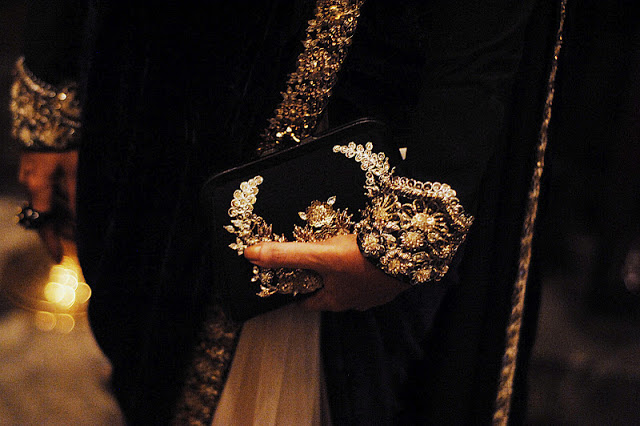
credit: Santu Misra \ Devil Wore
Speaking of going global, is craft valued accurately in India and abroad? In India, fashion magazines seem to be turning around and promoting Indian craft because everybody has done a bit of a double take and started introspecting. There has been a political shift in the way people look at clothing. It seems like more and more people are becoming proud to be Indian. A lot of people eventually come back home to be who they are. Once you enjoy that you don’t want to be anything else for the rest of your life. The perception about Indian craft was weak but now it’s becoming super strong. And the West is looking up to India. India at one point was subjugated by the West; they looked at it as a manufacturing hub and used to treat us like karigars. But with more of us becoming front office people, it’s a huge global threat. We’ve all tasted blood. It’s a newfound movement, and there is nothing they can do to suppress us. Today the country has money. The more we start using Indian products the more money we will have, and the more money we have, the more the balance will shift in our favour. .
How do you decide what to revive? What does revival entail? Your Parsi ‘Gara’ work is one example. Survival of a craft depends on market needs. My biggest strength is that I have a knack for understanding where the market is going to shift to before it shifts. It’s not for your customer to know what he needs, it is for you to tell him what he needs. If a matte finish is big for a very long time, and you show a little bling, people appreciate it. Why I started doing threadwork in gara was because the market was saturated with bling, plastic and shine. Had the market not been infested with so much bling, sequins and polyester tack, I don’t think gara would have elicited such a warm welcome.
One needs to study the market to learn what craft to exploit. You can revive the best craft in the world but if the market does not have a burning need for it, it will never really become big. You need to understand human psyche to sustain because you are creating a product for a human being and if the human being has no need for it, the craft won’t sustain. It stems from an inner need.
Can a craftsman eventually become a designer? There is a science to it: every car has a front wheel and a back wheel. Both the front and back wheel are equally important for the car to move forward. If the front wheel decides to suppress the back or when the back wheel decides to become the front, there can be a dangerous imbalance. Craftsmen have more or less been the back end of the industry and designers the marketers who are the front end. If there is no exploitation of craft involved, I don’t see why back and front end have to become the same. It takes a lot of expertise and knowledge to become the front end of a business and it takes a lot of skill to be the back end. To become a designer you need to be market and business savvy. Otherwise you can be completely consumed by it and lose track and lose touch with your craft. A craftsman is as good as his skill and a designer is as good as his mind. So in the process of trying to make money if one of us lose our skill set or our minds, we all crumble.
A lot of craftspeople have the foresight to understand that they’re doing what is good for them because this is what they’re meant to do, and don’t want to crossover. But at the same time, look at the tailors at Savile Row. Many of them have turned into designers though they are craftsmen too. They have developed the market savvy and expertise to become designers and sell to the world.
Craftsmen are a very protected lot, and so my advice to them is that it would be wonderful if they came to the forefront and got their own labels, but to make sure to have some sort of mentoring and know how to go about it.
Master craftsmen seem to play the role of entrepreneur, showman and karigar at once. They understand their craft, but they are also the face of the family home, and exceptionally charismatic marketers. Is this the archetype of a ‘modern karigar’?
Master craftsmen right now are all becoming middlemen. They don’t sit on the looms anymore. Most lose their essence by becoming businessmen. If it’s possible to be able to project one’s vision onto the other weavers, it’s fine. I’ve met a lot of master craftsmen who did exemplary work at one point but when I look at their work right now it’s been completely corrupted by commerce. The man himself is corrupted because what he set out to do and what he is doing are on completely different tangents.
Then there are craftsmen who are business savvy and don’t compromise. These are ‘lamba race ka ghodas’ (long race horses) – they will sustain while those who have diluted their sensibilities will fade out. Today, if you hold on to your principles and purity, you don’t need to go to the world, it will come to you. Master craftsmen never come to us, it’s always vice versa because we want to seek out the best.
Should this ‘middleman’ sensibility be circumvented? The middleman was necessary before for organizing craftspeople. They were not necessary for organizing anything else. But today if an organization can get salaried people to organize for weavers then you cut the middleman completely. One of the reasons I want to cut out middlemen is because I want the weavers to show their kids that they are earning a very decent salary and don’t need to shift to construction and other industries. Kids tell their fathers they want to go to an English medium school and study to become a chartered accountant. There’s nothing wrong with it but what if you can get the same amount of money being a craftsman? There are enough doctors, CA’s and engineers in this country but there are very few people who can do beautiful and highly developed craft. Today if you have a skill that nobody else has, it’s a monopoly.
We started a ‘Save The Sari’ project to cut out the middleman and source directly from the weaver by buying out stock from them. If the weaver is selling it for Rs.13/- and it’s selling in the market for Rs. 20/- we buy it out for Rs. 20/-. So basically giving the middleman’s money away to the weaver. We buy saris from different weavers in Pochampally, Orissa, Bihar, West Bengal, Rajasthan, Andhra, Chennai, Ahmedabad, Kutch. The saris either have to be hand dyed, hand woven, hand printed or hand embroidered. We sell them at a price that Khadi Gram Udyog or Fabindia or a State sari shop would. We buy it at retail prices from the weaver so there are no markups. The only thing we add is a sales tax (which is necessary) and about 5-6% for establishment cost and shipping. We pack them in these beautifully crafted tin boxes which became a rage to gift. The idea is to create awareness and demand within the local market for a woven sari at market prices endorsed by the Sabyasachi brand. It’s not profit oriented. It’s our support for the art and craft business.


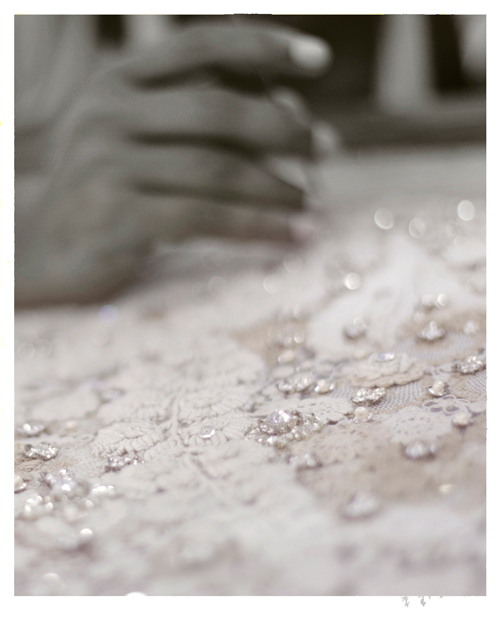
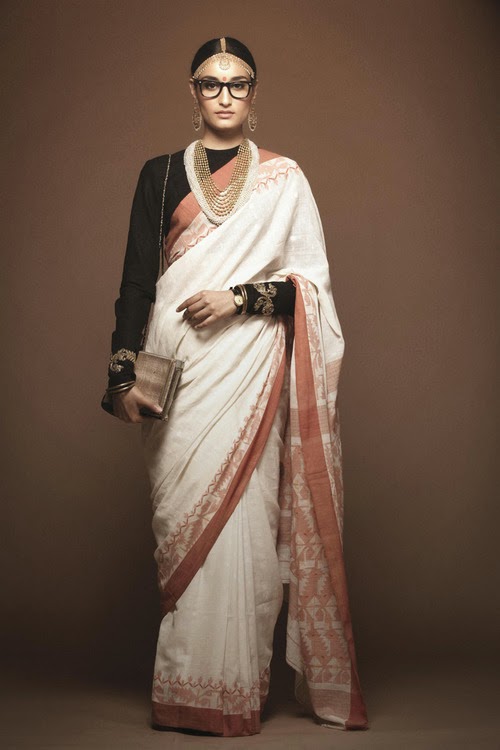
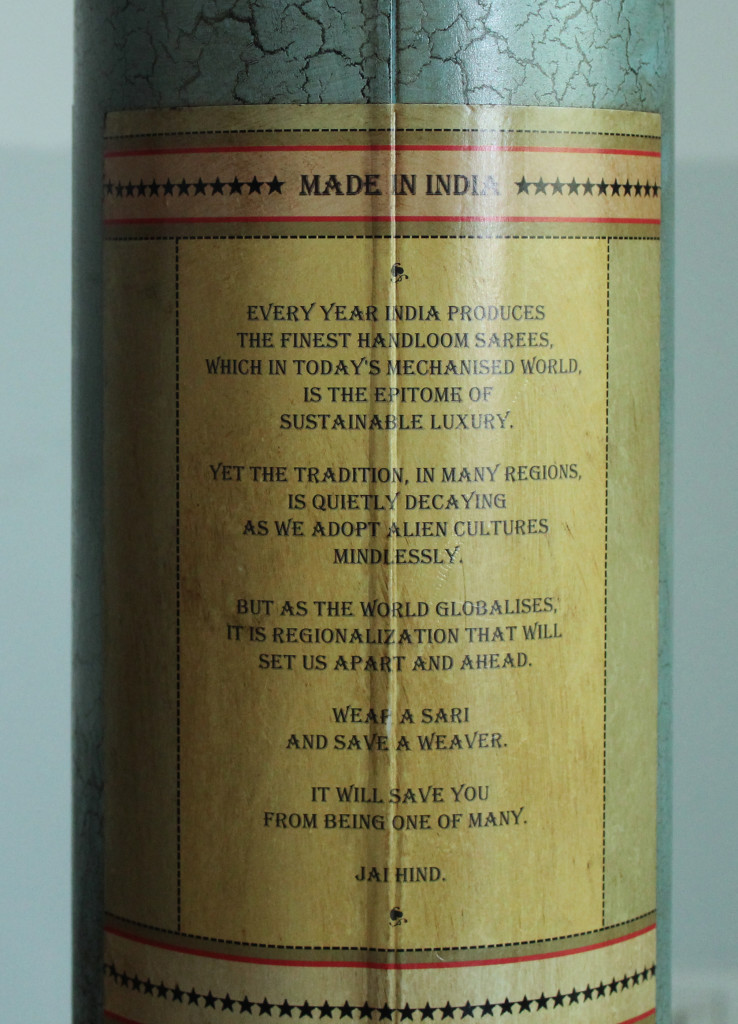
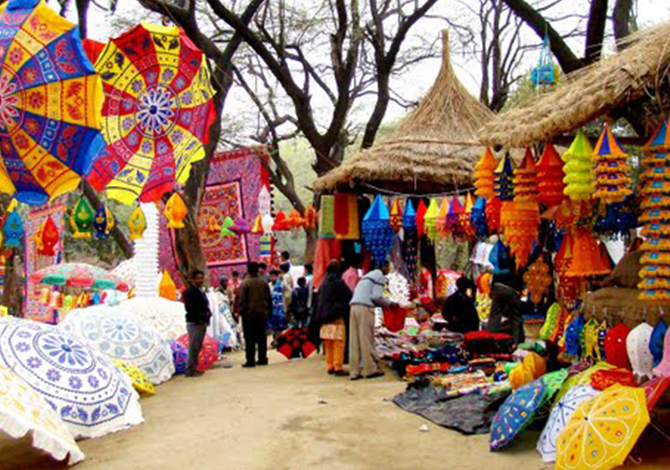
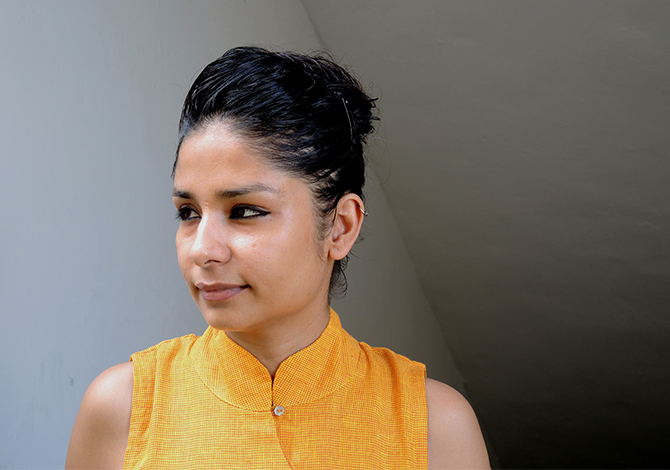
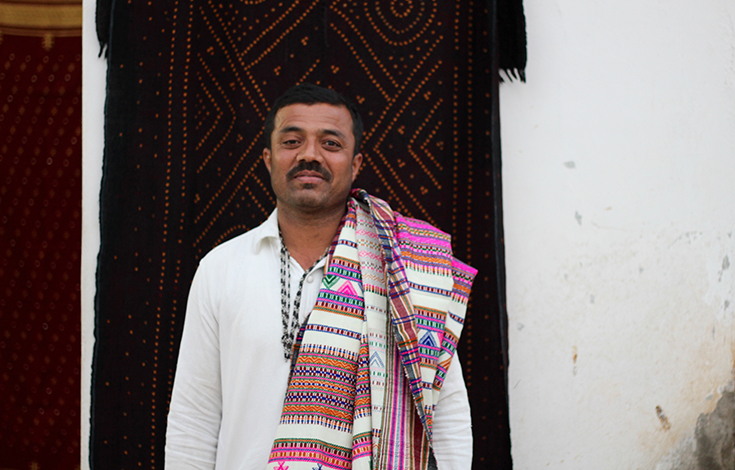
I love Sabyasachi’s ethos! Don’t mean to sound like a fan girl, but I wish more people thought like him!
Thoroughly enjoyed reading your story, thank you. I am Indian (borh in Calcutta, schooled Darjeeling) and live in Sydney. I freelance in travel – small group special journeys, specifically textiles/craft in India. I work closely with a wonderful company called Artisans of Fashion, run by Caroline Poiner who does amazing work with women weavers in India. Would you be happy for me to introduce our travellers to your enterprise when in Kolkata – and do you have a presence elsewhere in India? The escort on our textile tours was with The Powerhouse Museum in Sydney for 28 years and is an acknowledge expert on Indian textiles. Thank you, Pia
It was an insight to the mind of the designer though I love his work but today when I read about his vision it made me think that there should be more people having the same bent of mind to be proud of being Indian and respecting our culture and craft. Lot of people make money but they do not give it back… As he rightly said about the karmic am sure he will get good returns in the form of inner happiness.